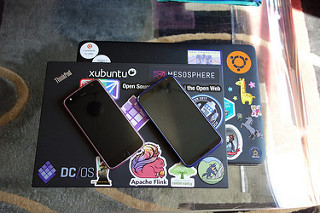“It was the best of times, it was the worst of times.”
I love my work, but that’s not always a good thing. I’ve been conscious of the risk of burnout for some time now. I take on a lot of work (paid and unpaid), struggle to maintain close personal relationships, and last year I had so much on my plate that I came closer to the edge than I ever had before. I had to make some changes.
The first was re-affirming my commitment to taking a day off per week. In 2013 I started taking Saturdays off. I sometimes say that the internet is “write-only” on these days, I may tweet about what I’m doing because I often do fun things, but I don’t read/respond anything until the day concludes. I will always have improvements to make here, but I am mindful of how important taking this day is, and how my well-being suffers when I don’t do it, or if am less diligent about my rules surrounding the day off.
The second was diving into a hobby that, while it will likely leverage countless tech skills eventually, is very different from anything I’ve worked on in the past and lets me build things: model trains! I’ve also started writing more on paper, both in the form of letters to a handful of pen pals (with varying frequency) and by starting to get into calligraphy.
The third was continuing to establish clear boundaries between paid work and everything else. Just like my interest in OpenStack propelled my work at HP, my belief in the success of Apache Mesos and fondness for DC/OS means that I enjoy and believe in my work at Mesosphere. There’s always more to learn, more to get excited about and share with the world. My queue of demos, blog posts, tutorials, talks and other things I want to do at work extends far beyond what I’ll ever have time for. To make sure I don’t risk trying, I strive to work no more than 45 hours each week at my day job, and aim for closer to 40. Travel always complicates things, but if I spend a Sunday speaking at a conference, I will often take a day off during the week to balance things out. In fact, I’m doing that today! There is a lot I can write about time management around travel, but that’s for another blog post. In this post I’m going to talk about cell phones!
Having a work phone is a popular thing, but it’s something I’ve resisted for a long time because it was hard to make it work in a practical sense. I almost exclusively use my personal email address for correspondence in my open source work because that community identity transcends employers, and is something that will follow me around in my career. That means I get GitHub emails for DC/OS work commits in my personal account right along with Launchpad notifications for Ubuntu. I do use my Mesosphere and DC/OS email accounts when I’m acting in a specific capacity, but just like my use of my Ubuntu email address, it’s done with intent. While working on OpenStack the communication method was IRC, which I also use for other open source work and I also hang out on a couple scifi IRC networks. For me, it all made untangling these things for the purpose of working on separate devices more challenging than it’s worth.
Things have changed some since then. In the Apache Mesos and DC/OS communities we use Slack to chat. I actually do find myself using work email address a lot more, and that is the address I use to interact with the tools we use to track a lot of our work (like Jira). As a forward-thinking startup, we also use apps for a bunch of stuff like HR tooling and expenses.
While my personal open source identity is still important in these communities, in this new role I’ve been able to draw some clearer lines than I have in the past. As a result, a few months back when my mother in law passed away and we found ourselves with her nearly-new phone, I decided to give the work/personal phone split a try. Here’s how it’s broken down:
Work phone: A Nexus 6 on Project Fi (by Google). I’ll probably upgrade to the new big Pixel when it comes out in October. With Project Fi I get international data coverage for the same rate as domestic, and decent international rates for voice/text, should I need to use them (rare). This phone has all my work apps with alerts turned on, plus all my travel apps. I also do keep personal apps and email accounts on here, because this is the phone I need to use when traveling internationally, but I turn off alerts for those unless I’m actively using the phone in that capacity. I carry this phone with me during weekdays, but usually not on weekends unless I’m traveling for work.
Personal phone: A Moto Z Play on Verizon. I got the Verizon plan a few years ago when I wanted a hot spot with better (and different) domestic coverage than my phone, which was on T-Mobile, then AT&T, then Project Fi. The hot spot was incredibly handy, but I may consider getting rid of it since my phone supports tethering. This has no work apps on it, just personal apps with alerts turned on. I always carry this phone, engagement with the community on social media is part of my job and I do still do that primarily with my personal account.
This experiment began in the beginning of April, and I think I’ll stick to it. Here’s what I’ve learned:
- I carry a purse, which makes carrying 2 phones easier, but it’s a pain to walk around the office to meetings with a laptop and two phones unless wearing a hoodie or some shirt that has giant pockets
- Two phones do not, however, fit into the lovely clutch I bought in Paris and bring to fancy events and parties
- I now have to charge 2 phones at night, and one of them is USB-C, no sharing of chargers
- Only one phone can pair with my Android watch at a time, I picked my personal phone, but it is a shame that Slack alerts don’t come to my watch
- I only actively use one phone number, fortunately I don’t do voice calls for work much (we have Slack! Hangouts! Zoom!)
- The Moto Z Play was a “free” phone on Verizon’s plans around the holidays, picked for my mother in law but it’s actually a decent phone, though with 16G of storage space I’ll soon run out
- It’s helping, I am appropriately alerted to work stuff on weekdays when I should be, and not tempted to randomly check work email on weekends
I also have a more distinct split computer-wise these days. My work laptop is the only one I log into work-only things with, it’s the only place I store my work ssh keys and other credentials. I used my personal desktop a lot more for work on OpenStack, but the setup on my desk at home actually works for this split, and my work laptop is the most powerful system in my fleet these days, so it makes more sense to use that one for all my local DC/OS work and demos anyway.
Through these work/life balance experiments I’ve been learning a lot about myself and how I work. It was easy to believe that being “on” all the time helped me be a better employee and a better community member, but that’s not true for me. It was obvious very quickly that making sure I don’t work too much has increased my creativity and energy at work, and reduced my stress. But I’ve been surprised to learn how much physically splitting my work spaces even just on my phones and computers has done even more to support these improvements. I no longer check work email at 2AM when I can’t sleep and then forget to reply to it the next morning. And even though I write blog posts and event reports both for work and personal projects, splitting up what computer I do that on helps makes them different so I don’t tire of it. You may not be able to reach me at all times these days, and I do still forget things, but I believe I’m starting to do a better job of juggling everything now that I have these boundaries.



